Yanko Design - Latest Posts |  |
| Posted: 07 May 2009 04:34 AM PDT The year is 2058 and you're bored of the drab walls of your home. Your change in mood is sensed and from a discreet corner a strange spider-like creature whirs into life and scampers across the wall. You're about to shriek and then you realize there's nothing to worry about; it's just your handy, Artificial Intelligent artistic robot, stamping out a Mona Lisa on the wall for you. Folks, let me present to you the Da Vinci of the future: xirrou. For some reason the robot is deemed for the far-away 2058, maybe that's when such kind of ideas would be an everyday occurrence and acceptable! Besides being intuitive, xirrou is actually a 2-component artificial intelligent robotic system. The first component features a stamp on its lower side that measures 16 square-centimeters, allowing it to print artwork to the walls and ceilings. Slated to be autonomous and creative, you can expect to have a mesmerizing time, watching it print out the graphics to the wall. A choice of pattern or picture can be fed to the robot; else it can dish out something groovy independently. Either ways, the robot's software sources the art piece from the internet by buying or leasing them for a certain amount of time and printing them immediately. The second component of xirrou carries 8 ink cartridges on its back and is hooked to the first half via an ink-supplying cable. Each component has 5 feet mounted around the central ring and each foot has 3 servo motor powered joints. Special adaptable plates are attached to each foot that facilitates wall climbing. An illuminate membrane at the central part of xirrou gives it a very ornamental look, making it fit comfortably in your home environment. Now you know why painters may be out of a job in the future! Designer: Christian Gumpold
|
| Posted: 07 May 2009 01:52 AM PDT We recently discussed how Ultra Violet can be a great way of sterilizing kitchen cutting boards and now it's time to discuss its benefits in a dishwasher. UV plays a key role in the Electrolux Wind Washer Dishwasher, which comprises of a three-step procedure. In step one, it uses a stream of high-pressure air to blow away all the leftover food crumbs on the dishes, to a waste holding bay. In step two, it steams them to degrease them. In the final stage, it uses UV to sterilize them. In case you are wondering why there is limited space in the service bay, it's because this Wind Washer is meant for single persons who are always on the go. One simply needs to place the used dishes in the bay and align the auto-sliding handle to the top edge. Vents inside the handle, blow out the air, steam and UV lights, in quick succession. The flip-side to this design is that it does only two dishes at a time. The designer suggests that the proportion of water used in this appliance is pretty less compared to what we traditionally use; hence it makes for great eco-sense. However, all this sounds really good on paper, but in practicality the power consumption, effective sterilization and the efficiency of the device will truly determine its worth. Designer: Hwang Jin wook
|
| Tokyo Fiber 2009 SENSEWARE PART 2 Posted: 07 May 2009 12:02 AM PDT Part 2 of our coverage. Jun Aoki, Kashiwa Sato, Kengo Kuma, Kosuke Tsumura. Exhibition: Tokyo Fiber Ultra-long arm thin beam cantilever lighting fixture Jun Aoki / Toray Industries, Inc. Material: TORAYCAWith a pure and simple innovative approach, architect Jun Aoki took a close look at carbon fiber and conceived a product that straightforwardly brings out the characteristics of this fiber. Carbon fiber provides strength under tension and is very light, as can be clearly seen from the structure of the long cantilever bean that Aoki produced. Stretching across the room, the lighting fixture illuminates more than enough space for five chars side by side, even when the chairs are spread out. Toy building blocks made from highly elastic monofilament fibers Kashiwa Sato / Toyobo Co., LTD. Material: BREATHAIR Art Director Kashiwa Sato is active in a wide range of areas from kindergarten design to design of mobile phone handsets. Sato had the idea of making blocks for kindergarten age children. These are soft building blocks of air. The highly elastic monofilament is extruded into random cells to make a cushion material that is 95% air, thereby effectively capturing air in three dimensions. The material is washable, safe, and clean. Ideal for building dens! Light penetrable architecture for communicating with outside Kengo Kuma / Mitsubishi Rayon Co., LTD. Material: Plastic optical fiber ESKA By embedding optical fibers continuously, then cutting across fibers, it is possible to make concrete that light will penetrate. Kengo Kuma, known for architecture, understands building design can be influenced by the potential of its materials. These piled light blocks create a new architectural vocabulary. The space he produced is translucent, so people inside sense the shadows of people walking outside. This represents a radical change for the character of a solid material that would normally shut out light. Softness and firmness from the same material Kosuke Tsumura / Kuraray Co., LTD. Material: FELIBENDY Kosuke Tsumura, a fashion design who is constantly searching for new, meaningful perspectives for clothing and people, created clothing for a mother and her baby. The rockable cradle that gently accepts the new-born baby is made from a material that is soft like a blanket. The impression in the center is firm like a silk cocoon. Individual laser cut units are combined like puzzle pieces to form the mother’s clothes. No Tags |
| Fan Blades Made of Chicken Wings Posted: 07 May 2009 12:01 AM PDT No joke! This fan can make your chicken wing fan fantasy a reality! With the “JOININ’ Fan” you can clip in whatever you like! Though you may have been inundated with false lab-made smells if you work amongst other people, your nose always knows. Let your nose have a rose. Clip in some pedals and let ‘er fly! Wafting the loveliness of whatever blades you choose to insert, the Joinin’ Fan is exactly the kind of cute invention that all free-spirited kawaii-seekers aught to peek at. Qian Jiang and Yiying Wu have a lovely poem written for you explaining the usages and the spirit of this fun-loving and oddly appealing non-traditional fan.
Enjoy it indeed! And of course, we must discuss the chicken. What about the chicken? How is that even a thing that anyone would have even thought of putting in this fan. How realistic is basically every chicken-lovers strangest dream… or nightmare? Designer: Qian Jiang and Yiying Wu
|
| Posted: 07 May 2009 12:00 AM PDT We all know that washers and driers consume a lot of energy, but how about a method that makes them do a U-turn? How about a system that harvests the potential kinetic energy generated while the machine is doing its thing? Super cool idea, right! The "Veos" orb is not much of a fuss-pot; all you got to do is toss it into the washer bin with the rest of your laundry load. Let it spin and catch some POWER! Designed to hold a load of fabric softener and a matrix of free-floating zinc/oxide nanowire plates, the ball soaks in most of the wasted kinetic energy that is generated during the wash and dry cycle. Veos does not require any inputs; it stores the harvested energy till you unload it back into the grid, thus save on electrical costs. I like the idea that it holds space for fabric softener as well, sounds like its multi-tasking as a clean and save device! Designer: Joe Brussel
|
| Illustrated Sound, Win a Geneva Stereo! Posted: 06 May 2009 10:51 AM PDT Want a Geneva Medium all-in-one stereo? ($799) In cooperation with DWR and Parsons design students - Geneva is giving you a chance to win one and all you have to do is vote! The students were asked to design one of a kind “skins”, similar to the ones available to the iPod market. Hit the jump to see the designs. Voting ends May 19th so go get democratic and cast your opinion! Vote: Illustrated Sound
|
| Posted: 06 May 2009 08:58 AM PDT The Wacomvision is a three dimensional canvas for creating and viewing art, products, and models. Three dimensional paintings can be created and shared online. Brush size, pressure sensitivity, and brush type are customizable. Snapshots and videos can be taken of your artwork. Not going to make it to the Louvre? You can use this product to download and view preserved art up close and from all angles. In a business applications, imagine being able to walk around a concept car or viewing a model without a rapid prototyping lab, model making time, or money. Three dimensional models can be sent between clients to review work. Notes and requests can be marked and saved on certain areas of the models using the pen tool. You can also virtually render, paint, record, and capture views. This product uses a state of the art virtual tracking system called IGPS Technology. This modular product has three transmitters that are wireless and placed around the edges of your 3D canvas. After the transmitters are automatically calibrated for each use, they use invisible infrared laser signals that create a three dimensional environment. The pen is imbedded with a sensor in the tip that streams its exact 3D position using the signals from the transmitters. The information is relayed back to the console and wirelessly transmitted for viewing through the virtual glasses. A USB connection to the console allows for viewing of outside virtual models to be used as underlays. You can choose to view your artwork with or without the actual physical background. Multiple people can be linked to the same projection so you can work as part of a team. In order to bring up the interface, the button on the pen is pushed. The interface menu can be dragged and docked all around your environment. The button on the top right hand edge of the glasses can be pushed to allow for picture and videos to be taken. Designer: Lauren Argo
|
| Portion Control is the Key to Healthy Eating Posted: 06 May 2009 08:52 AM PDT One can just look at the palm of their hand to calculate how much they should eat, but if you’re like me and tend to fill up a plate, then you need something more deliberate. The Plus Minus system is dinnerware with the skinny-you in mind. On one side you have shallow recesses to control food portions. Feeling portly? Flip it over and you’ve got a giant sinkhole for all your binge needs. Stack them up and there’s a gestural play on skinny vs. fat. Hmmm… DO WANT! Designer: Soo Kwon
|
| You are subscribed to email updates from Yanko Design To stop receiving these emails, you may unsubscribe now. | Email delivery powered by Google |
| Inbox too full? | |
| If you prefer to unsubscribe via postal mail, write to: Yanko Design, c/o Google, 20 W Kinzie, Chicago IL USA 60610 | |
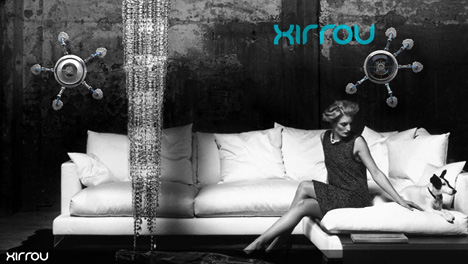
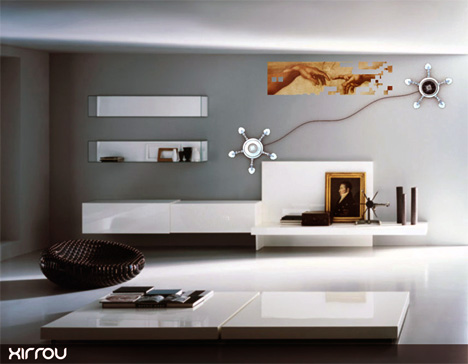
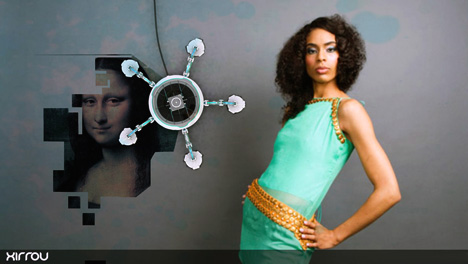
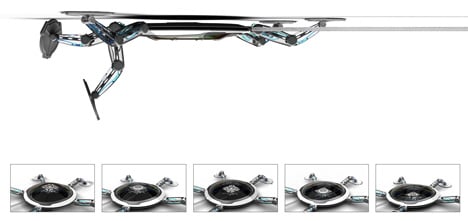
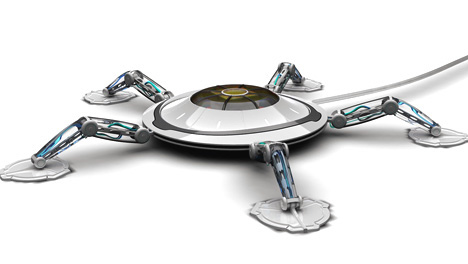
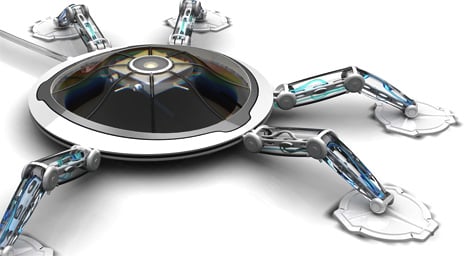
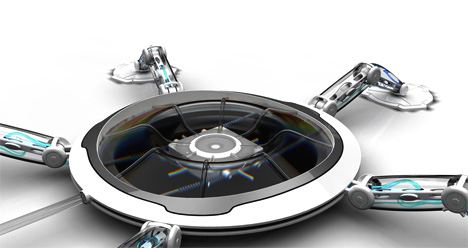
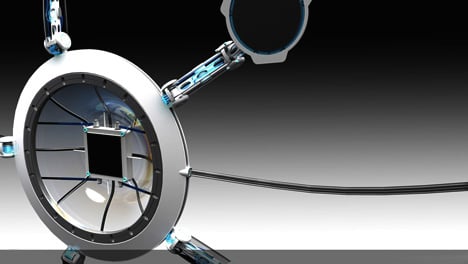
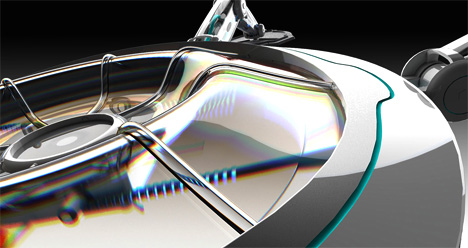


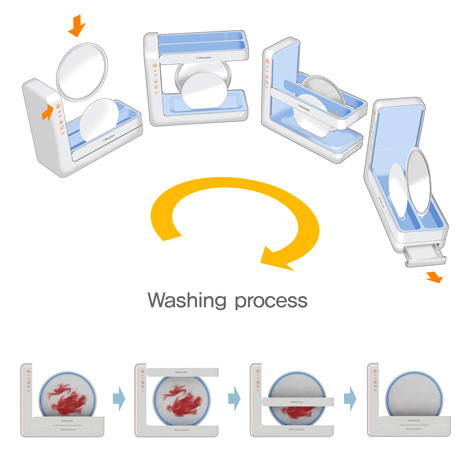
























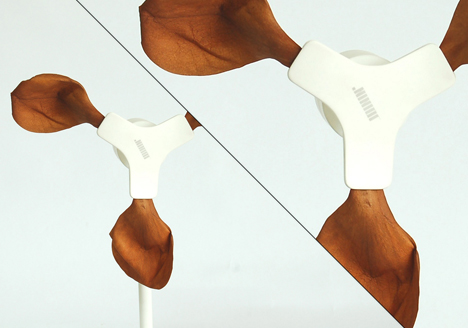















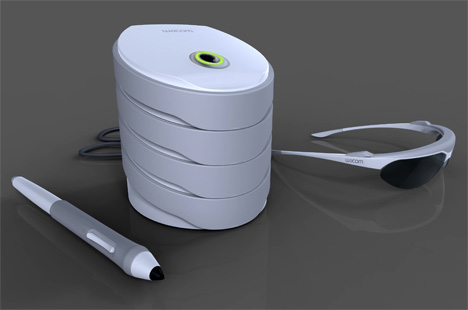










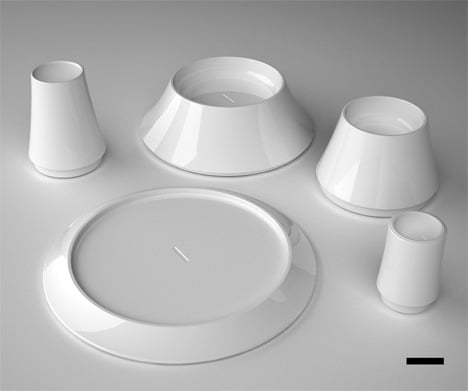
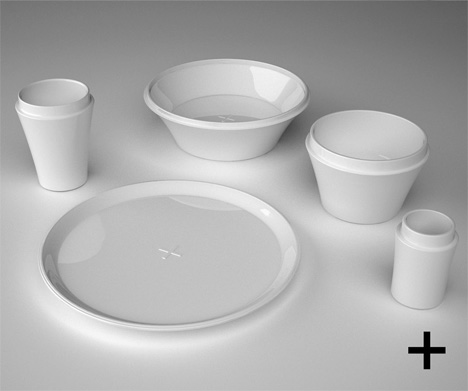
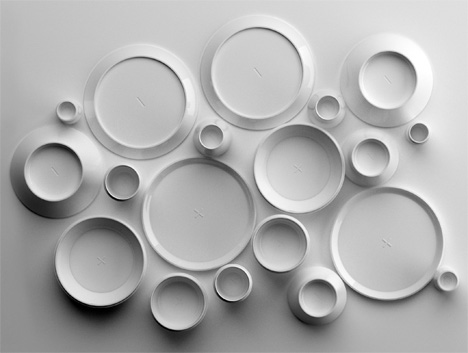
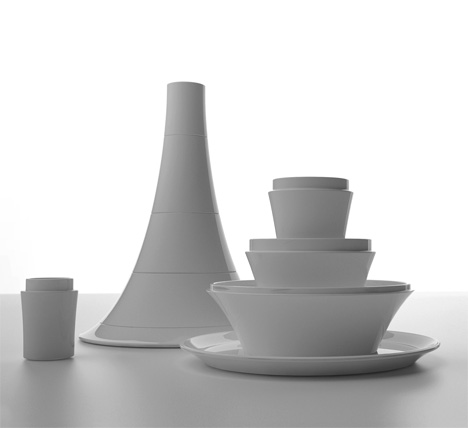

No comments:
Post a Comment